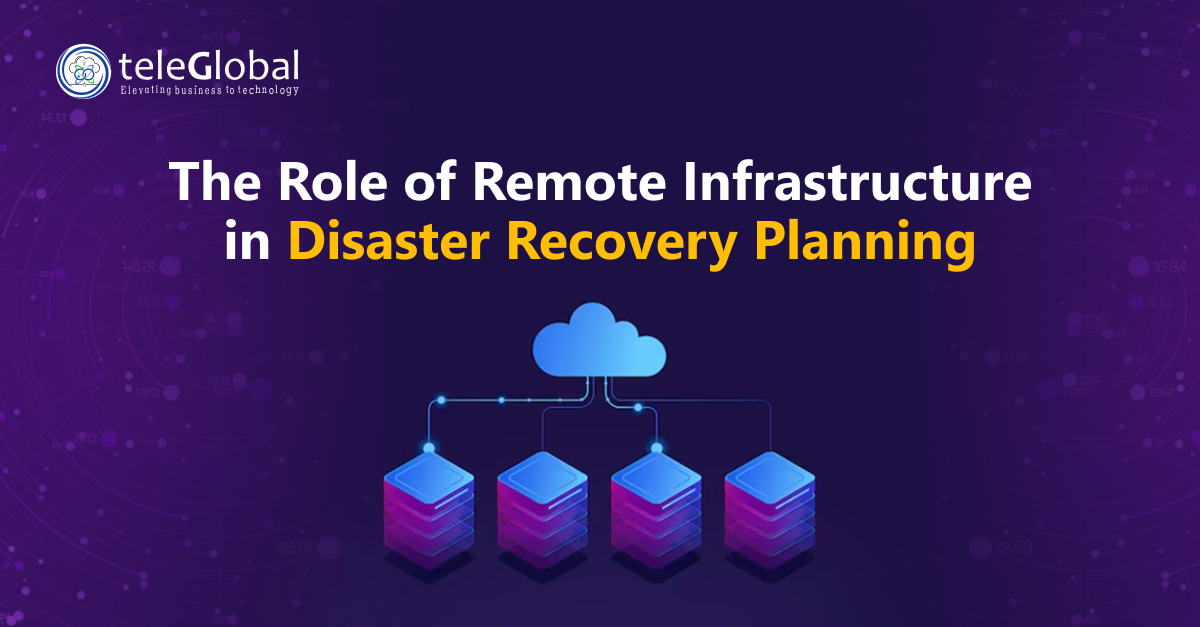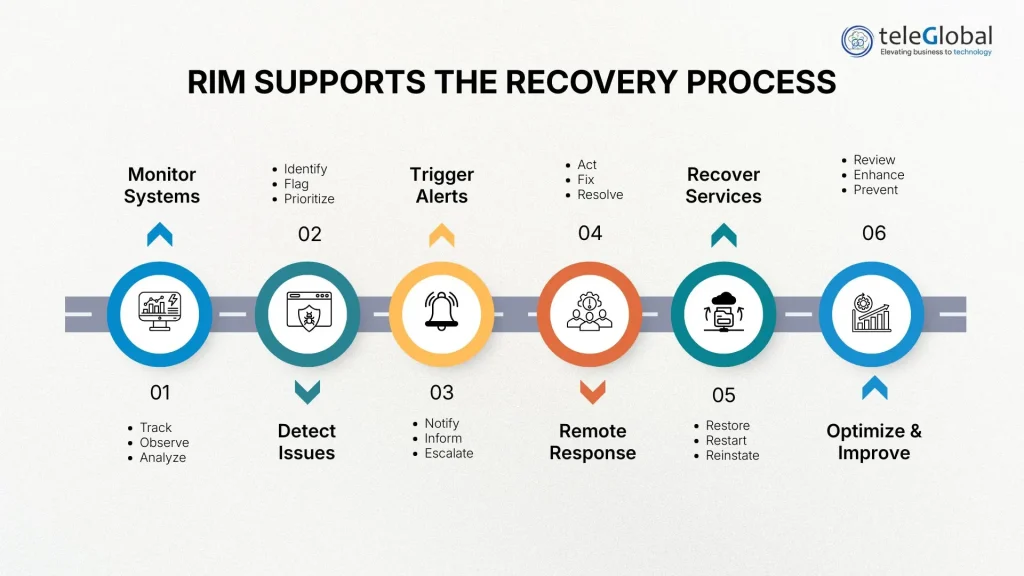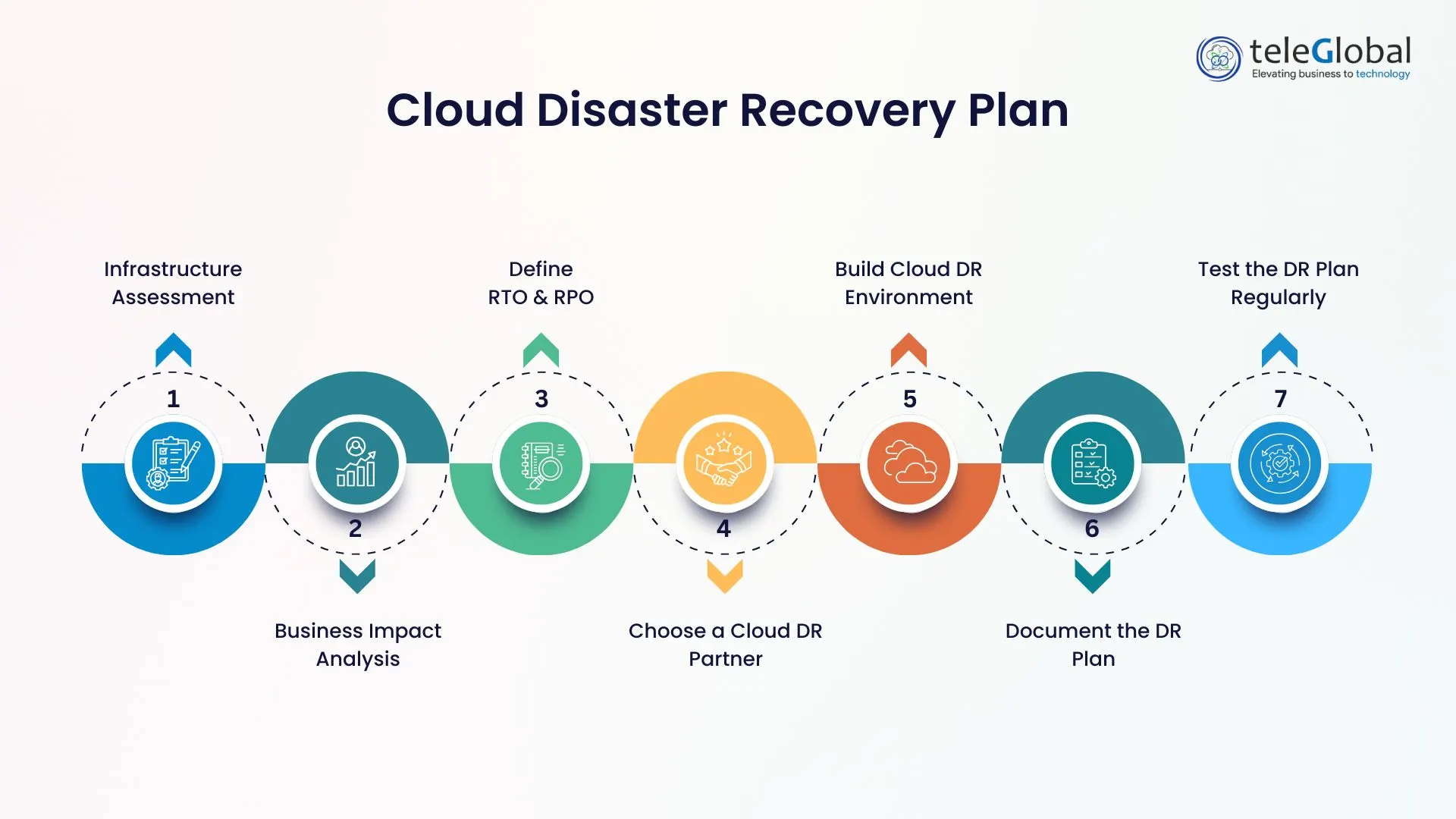
| Author: Abhinita Singh | Published: 04-Dec-2025 |
Disasters disrupt business without warning. Power cuts, cyberattacks, or storms can stop operations in seconds. Companies in India, the US, the UAE, and Europe face these risks daily. Even a short outage can impact revenue and customer trust, recent studies show that downtime can cost up to US$300,000 per hour (ITIC, 2024).
Strong recovery planning is the only way forward. Today, remote infrastructure and Remote Infrastructure Management (RIM services) form the backbone of recovery. They keep systems available even if local servers fail and ensure business continuity during unexpected failures.
Disaster recovery refers to restoring IT systems quickly after a disruption. It ensures applications, data, and networks become operational again without long delays.
Every business depends on technology. When systems fail, employees can’t deliver, and customers can’t connect. As downtime grows, loss increases.
According to analysis shared by Forbes, approximately 40% of small and mid-sized businesses never reopen after a major disaster, and an additional 25% fail within the following year.
A good recovery plan reduces risks and ensures operations return faster.
Remote infrastructure stores data, applications, and system copies away from the main office. These backups are kept in cloud environments or remote data centers.
When the primary systems fail, the remote systems take over. This keeps business operations running with minimal downtime. It is far more reliable than depending on local backups alone.
Cloud-based remote environments also make recovery faster and more flexible. Because data is replicated to secure offsite locations, businesses can restore services even during large-scale outages or local disruptions.
Remote setups also make recovery faster. Data stays safe in secure locations, and services can be restored even during major outages. This gives businesses a stable and dependable way to continue even when the primary site is offline.
This makes remote setups a strong and practical foundation for disaster recovery.
The table below shows the key differences between remote and on-premises infrastructure.
| Point | Remote Infrastructure | On-Premises Infrastructure |
| Location | Stored in cloud or remote data centers | Stored at the main office or local site |
| Backup Safety | Safe from local damage, fires, floods, or outages | At risk if the main site is affected |
| Recovery Speed | Failover happens quickly with little downtime | Recovery is slower and may need manual work |
| Cost | Lower cost, no need for a new physical site | Higher cost due to hardware and maintenance |
| Scalability | Easy to add more storage and capacity | Limited by existing on-site hardware |
| Testing | Tests can run without affecting daily work | Testing may interrupt daily operations |
| Flexibility | Works well with cloud and hybrid setups | Mostly fixed to one location |
| Management | Managed remotely, often automated | Needs on-site teams and manual monitoring |
Disaster Recovery as a Service uses the cloud to protect systems and data. It creates a full backup environment that can take over when the main one fails.
With DRaaS, a provider manages the backup setup, monitoring, failover, and compliance needs. This reduces the work for in-house teams and gives businesses a secure and ready recovery system.
DRaaS also offers continuous data replication, easy testing, and lower costs because there is no need for a second physical site. Providers keep the recovery systems updated with the latest security measures.
DRaaS is growing across industries. The global cloud-based disaster recovery market was valued at about US$9.9 billion in 2023 and is expected to reach US$92.8 billion by 2033 (Allied Market Research). Companies in the US and Europe use it to meet strict compliance rules. In India and the UAE, more businesses are adopting DRaaS to protect digital operations, follow local regulations, and avoid long outages.
DRaaS makes recovery smoother, faster, and easier to manage.
Remote Infrastructure Management (RIM) keeps IT systems always running smoothly. It manages both on-premises and remote environments, so they stay healthy, secure, and ready for recovery.
RIM services include constant monitoring, early detection of failures, and quick action when issues appear. This helps prevent small problems from turning into long outages. Industry reports show that continuous monitoring can reduce unplanned downtime by up to 60%.
RIM also handles updates, patches, and compliance checks. These tasks keep systems secure and reduce the risk of failure during an emergency. Studies show that over 70% of system outages come from missed updates or configuration issues, which RIM helps avoid.
RIM supports disaster recovery in many ways:
RIM services also help teams save time. Automating routine tasks and alerts can reduce manual work by 30–50%, making IT operations more efficient.
With RIM services in place, businesses get a stable and well-maintained setup that supports faster and more reliable disaster recovery.
Here is a simple workflow that shows how RIM supports the recovery process.

Strong security is needed to support each step in this workflow. It protects data while systems switch between the main site and the remote environment.
Network security is a key part of any disaster recovery plan. When systems fail, data must move safely between the main site and the remote environment. Without strong security, recovery can expose the business to new risks.
Security tools like firewalls, encryption, and access controls help protect data during backup and failover. Multi-factor authentication also prevents unauthorized access. These measures keep sensitive information safe while systems are being restored.
Storing backups in secure and separate locations adds another layer of protection. If one region faces an attack or outage, the data is still safe in another.
A secure network ensures that recovery happens smoothly without putting data at risk.
A strong recovery plan helps businesses return to normal quickly after a disruption. Building this plan is easier with remote infrastructure and cloud-based tools.

Here are the main steps:
A remote-ready plan makes recovery faster, safer, and easier to manage.
Even with strong planning, some challenges can affect disaster recovery.
These issues can be managed with careful planning, expert help and the right support.
At Teleglobal, we design recovery plans using remote infrastructure, RIM services, and cloud infrastructure management.
We build secure backups, enable quick failover, and meet compliance rules. Our team works with businesses in India, the US, the UAE, and Europe. We test plans, train staff, and provide ongoing support.
With Teleglobal, companies get safe, reliable, and fast disaster recovery.
It manages IT systems remotely to ensure they are safe and ready.
It is a cloud solution that restores systems quickly during failures.
It manages backups, failover, and cloud systems to reduce downtime.
This is important because it protects data during backup and failover, keeping systems safe.
Yes, it allows instant switch to backups and faster system recovery.
It is cheaper than building full backup centers and saves long-term costs.
 close
close

Hi there! At TeleGlobal, we turn your cloud vision into AI-accelerated reality. What challenge can we help you solve?
Powered by ![]() teleBot
teleBot